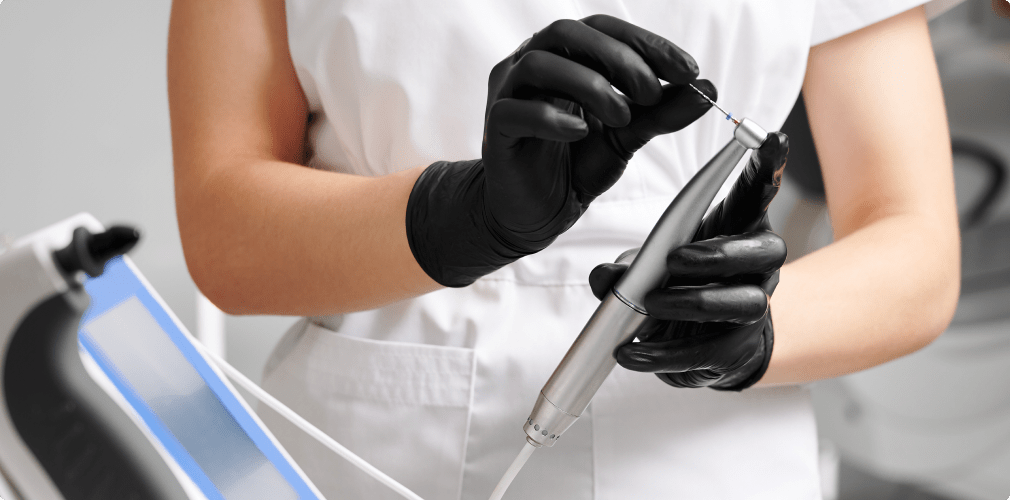The aim of endodontic treatment is to remove the soft tissue (pulp or dental nerve) from the inner part of the tooth. The main aim of this specialty is to avoid tooth extractions and prevent infections, which can be extremely dangerous and painful.

This is a treatment that sometimes has to be carried out in several stages/appointments. First, the infected pulp inside the root canals is removed. Then the root canals are properly disinfected to eliminate all bacteria. In this phase, the channels will also be prepared to receive a filling derived from plant resin.
Finally, after filling the canals, the tooth is sealed and restored with a composite resin restoration or a ceramic crown (depending on the state of destruction of the tooth) to restore its natural appearance and strength.

The tooth is then no longer vital (sometimes referred to as “devitalization”) and will no longer be able to feel hot and cold. However, without proper oral hygiene, the tooth may still be prone to decay, and if this jeopardizes the watertightness of the endodontic treatment and/or restoration, infection may still develop. Depending on the condition of the tooth, it may then be necessary to repeat endodontic treatment or extract the tooth. That’s why it’s so important, both for a vital tooth and for an endodontically treated tooth, to observe rigorous hygiene and regular check-ups with the dental surgeon.
Also worth seeing: Dental implants at Dr Maire’s dental office in Lisbon